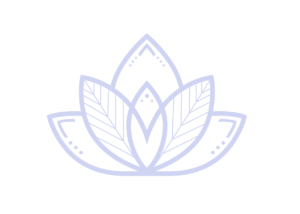
By: Patrice Flanagan-Morris, LCSW
In our last blog, we talked a little about quick coherence and its ability to help you to calm your body. There are many tools to support you in doing this. Remember – dealing with heavy emotions such as grief, anxiety, sadness, and anger is too often fought with words and thoughts. Instead getting into your body will support you in calming down faster, and increasing your ability to look at the situation with a different perspective.
Below you will see 4 tools that will support you in calming your body. Practice outside of times when you are feeling intense emotions often helps when we need to use these tools in intense times.
Guided Imagery Meditation – Calm the Mind
Meditation can be an amazing way to calm the body. For most people when they are struggling with anxious thoughts, clearing the mind makes them more anxious. This is where guided imagery comes in! You can find different meditations in a lot of different places: insight timer, youtube, headspace. Here is a guided imagery meditation that is a favorite of mine: Forest Imagery.
Guided Imagery is all about visualizing going to a place that you find calming. Preferably without any people or pets. For me, forest scenery or anything near the water does it. Every person is different, so think about places in your life where you have been where you have felt stillness, or peace. Is this on a boat, at a beach, on a hike, inside on the couch? No judgments. And then do a quick search for a guided meditation. I recommend starting short (5 minutes or less) and slowly finding longer meditations as you find this practice to be supportive for you.
Breath Work – Calm the Body
Breath work focuses on the breath. Learning to slow or speed up your breath based on your needs. If you are feeling shut down, you may need a more shallow and rapid breath to get yourself more energy. If you are feeling stressed or overly anxious then you may need a slower breath.
A good one to start with is box breathing. Here are the steps:
- Draw a line up while you inhale for 4 seconds
- Draw a line to the right as you hold your breath for 4 seconds
- Draw a line down as you exhale for 4 seconds
- Draw a line left as you hold for 4 seconds
Give this a try a few times in a row and see how your body responds!
Bilateral Music – Calm the Body
Bilateral music is what we use in Brainspotting. Because the music throughout processing is in support of calming your midbrain down so you can process more within your window of tolerance, it is a great outside skill to calm the body. The back-and-forth movement supports both sides of your brain by talking to one another and calming the amygdala (your alarm system).
Here is a track to get you started: Bilateral Music. This one can be great to pair with breath work as well!
5 Finger Breathing
This is similar to breath work – also supportive of using your own body in pairing with it. This helps the mind and body become more present. Rather than falling into the past or hyper-focusing on the future, it can simply be in the here and now.
- Start to trace one of your hands with another
- As your finger goes to the tip of your hand inhale
- As it comes down towards your palm exhale
- Do this for both hands
This is another way to support your mind/body in calming, regulating, and centering. Once you have done this – you can go back to the problem and look at it from a new perspective. Perhaps reflect on what within you was triggered by the situation & if you need to say or do anything, or simply give yourself compassion.

[…] hyperarousal through intentional grounding and calming techniques (Patrice recently posted a few here). If you are able to engage in this practice consistently, you will create a new pattern. This can […]